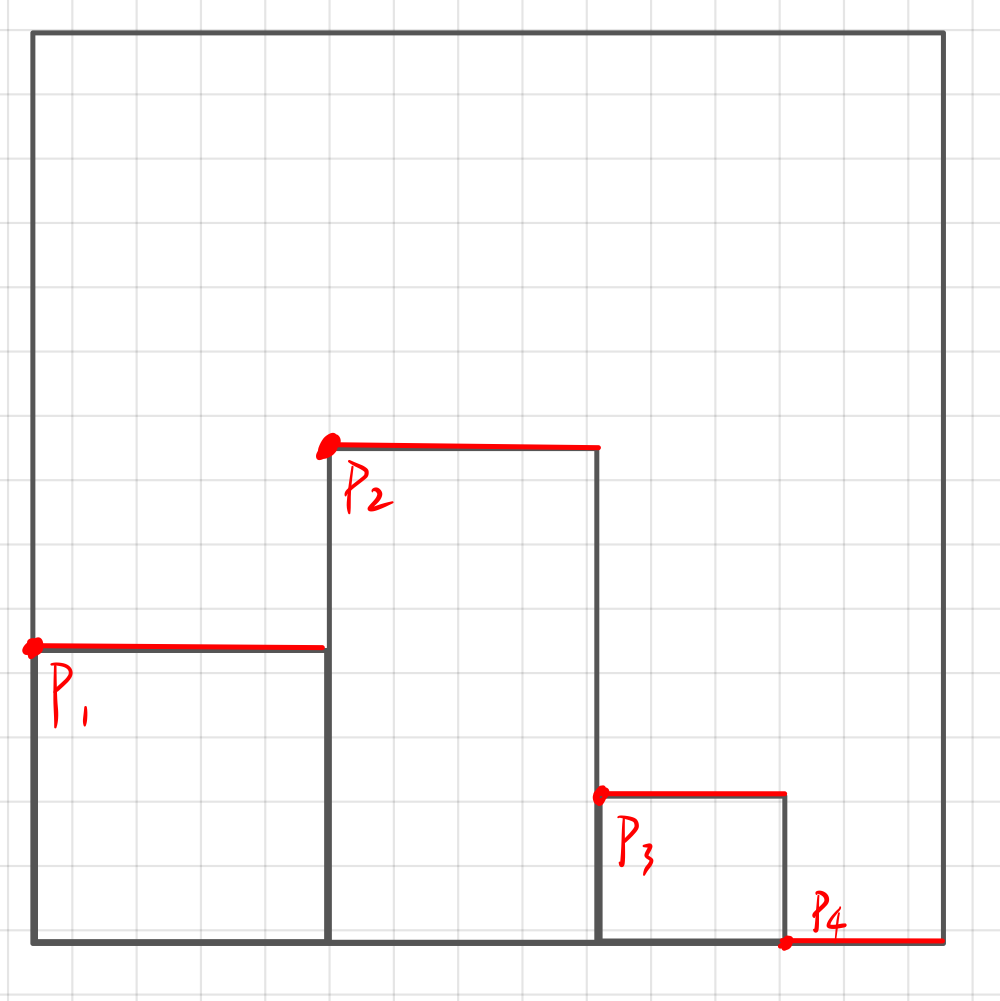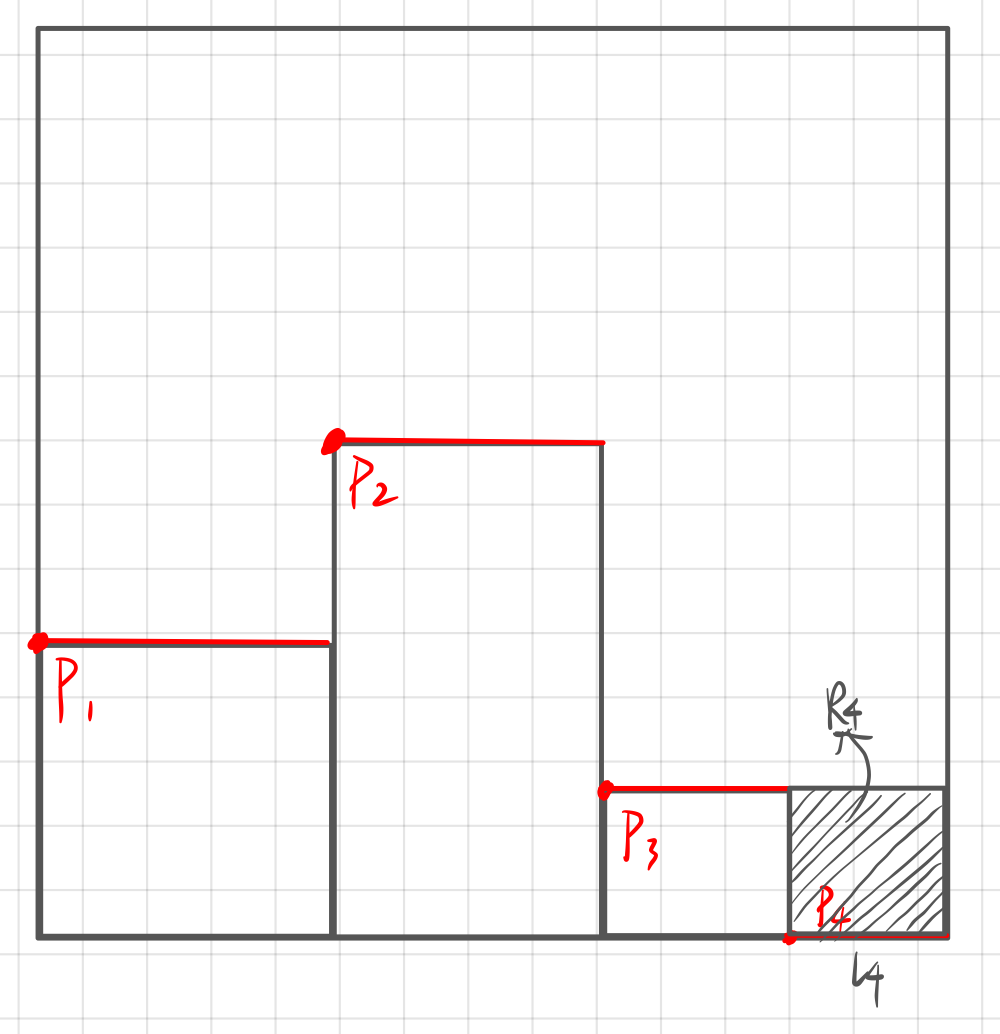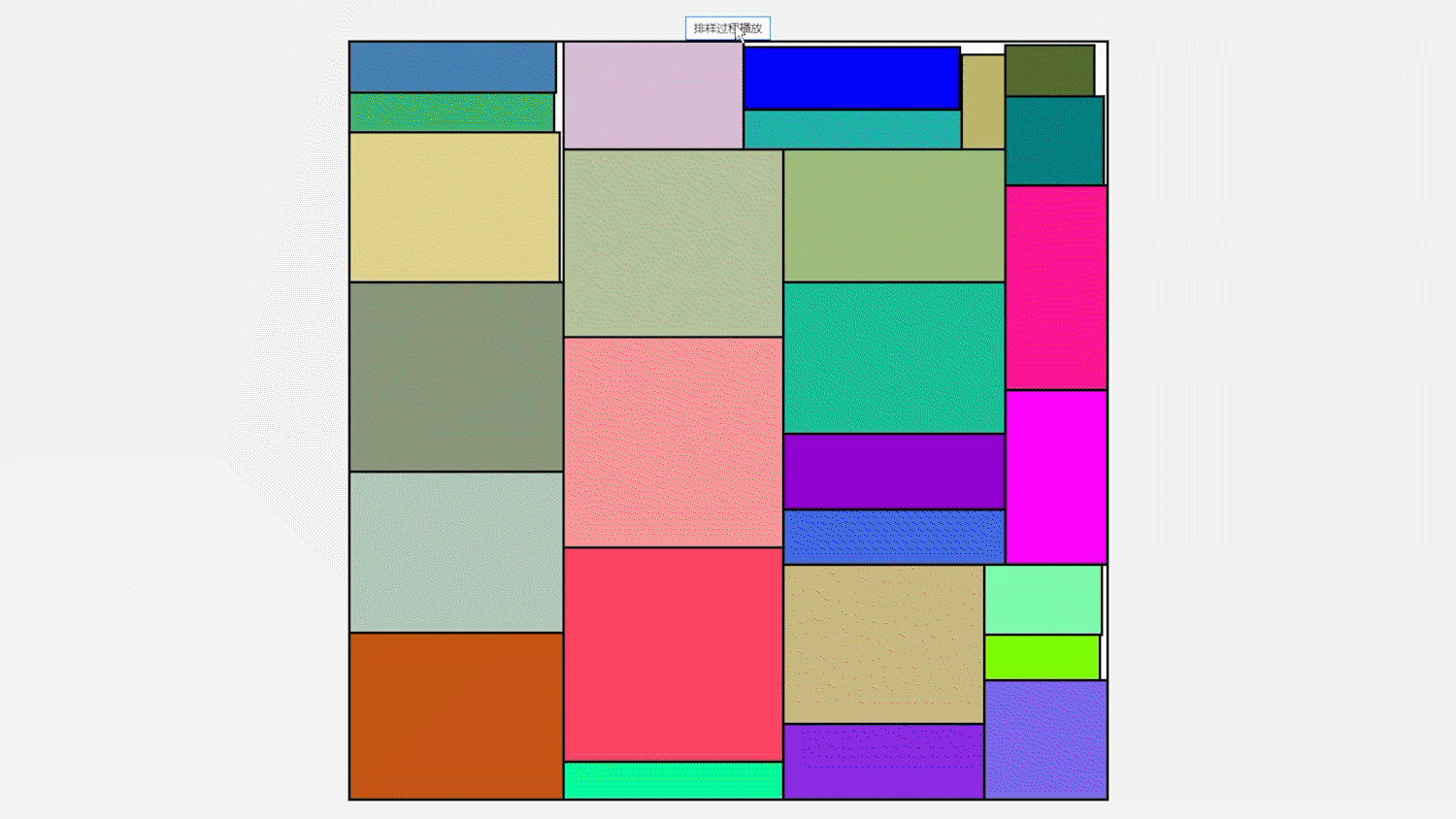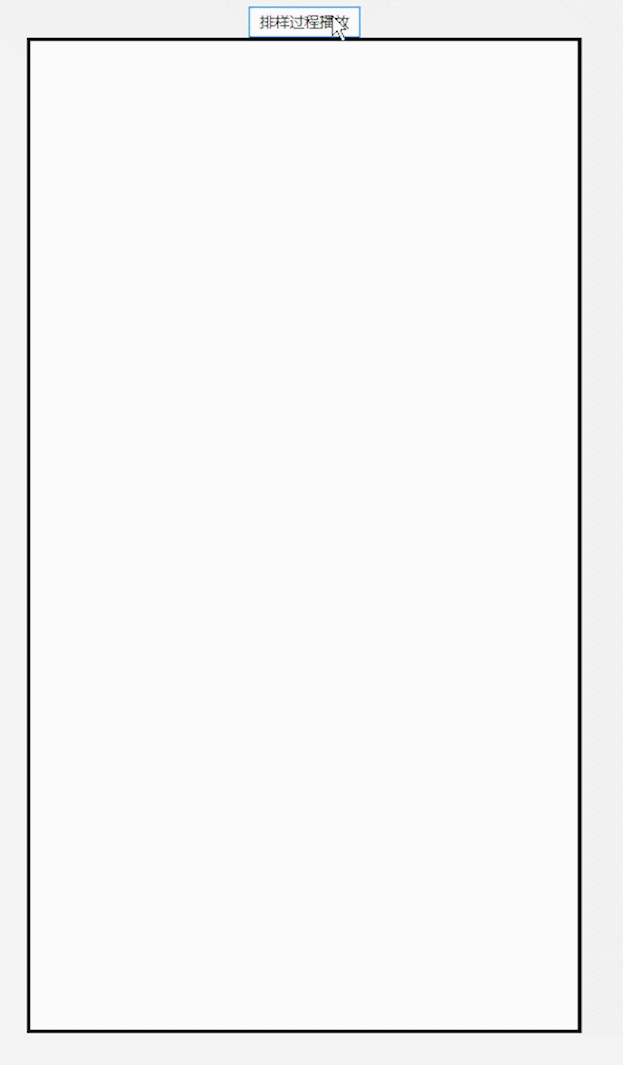1, Introduction to two-dimensional rectangular layout
the two-dimensional rectangular layout problem can be simply understood as: given a rectangular material, multiple small rectangles with different sizes need to be cut from it. How to cut them to maximize the utilization of materials.
2, Method introduction
the editor feels that the key steps to solve this problem are as follows:
1. How to generate a placeable position for a small rectangle
Xiaobian generates new positions by updating the red line at the top of the small rectangle in real time, that is, p1, p2, p3 and p4 in the figure below. Xiaobian stores these red lines through a linked list, that is, the x,y coordinates of p and the length of the line.

when the lower left corner of a rectangle is placed in p4, if the width of R4 is equal to the length of l4 or very close to the length of l4 (it can be judged by the minimum edge of the existing small rectangle. If the length of l4 minus the width of R4 is less than the minimum edge, there is no need to generate line l5), I directly move l4 up to the top of R4; Otherwise, the length of l4 is equal to the width of R4 and a new line l5 is generated. (note that the width of the small rectangle here refers to the length of the side parallel to the x axis)

when the selected position cannot be placed in any rectangle, I directly move the line at this position to the position with the same height as the shorter one of the two adjacent lines. If there is only one adjacent line, I can directly move to the height of the high line. (Note: after moving, the two lines will be merged to generate a longer line, that is, a wider position.)
as for how to select the first rectangle, Xiaobian is to select the first small rectangle of the sequence, so that the solution will change with the change of the sequence. The generation of the first red line is also simple, that is, the bottom edge of the large rectangle.
2. How to select a placeable location from placeable locations to perform the current small rectangular layout
because Xiaobian was lazy, he chose the simplest way, that is, the position with the smallest y.
3. How to select a small rectangle that best fits the placeable position selected in 2
here, Xiaobian also chose the simplest way, that is, the scoring method. Put each small rectangle in this position, and then give it a score. The scoring method of the minor editor is:
(int) (width of small rectangle / length of position) * 100 / 10for the rectangle with the same highest score, the small series selects the first rectangle with the highest score in the sequence. The above scoring method is actually selected to make the later heuristic algorithm play a greater role. Otherwise, in the face of the same position, the small rectangle with the width closest to the length of the position will be preferentially selected, so the mutation ability of the solution will become worse. Using the small series method, that is, whether it is 0.96 or 0.91, the final score is 9 points. In this way, the solution will change accordingly with the change of the sequence. Of course, this scoring method is only the simplest way, and there are many methods to choose from. For example, the higher the matching degree between a rectangle and space, the higher the score. In this way, not only width but also height are considered. The solution layers obtained by this scoring method will be relatively flat. Other methods will not be discussed in Xiaobian. Everyone is free to imagine. (Note: the small rectangle can be rotated. It's better to rotate it and give a score when scoring, so that the solution can be better.)
4. How to update solution
the method of updating the solution is also very simple. Just update the sequence of small rectangles. When it comes to updating the sequence, the heuristic algorithm is more suitable. Xiaobian uses tabu search. Of course, other heuristics can drop. You can use several methods and compare them yourself.

3, Algorithm test
the data used in the test and the layout effect are shown below. This effect shows that JavaFx technology is used. This technology is most suitable for the verification of the algorithm. Whether the solution is correct can be known by drawing a diagram.

Example 1 data: 400 400(Large rectangle) 59 115 26 99 68 97 41 63 99 116 21 60 79 118 113 85 86 55 33 114 76 70 27 47 117 40 30 46 60 62 87 55 21 108 60 67 82 93 44 49 84 96 89 34 47 34 94 44 117 80 91 62 112 73 37 92 50 48 113 100 24 55 56 27 103 21 61 24 116 111 51 62 67 76 95 57 113 116 63 49 44 56 52 47 33 66 102 53 117 107 40 106 109 27 79 99 40 82 98 96 105 105 94 31 97 78 50 23 86 22 39 59 54 92 37 67 81 102 58 33 113 88 117 71 20 58 65 63 20 116 114 69 117 29 99 88 90 49 35 80 84 87 79 111 97 25 115 21 82 66 79 84 71 38 68 80 57 82 30 73 102 31 68 42 109 106 40 42 24 71 95 101 39 94 100 108 102 26 57 89 108 54 92 107 38 62 38 32 115 46 68 37 106 84 55 73 48 103 107 64
Example 2 data: DamRectangle bigRectangle = new DamRectangle(1, 500, 900, 1); List<DamRectangle> smallBigRectangleList = new ArrayList<>(); smallBigRectangleList.add(new DamRectangle(0, 127, 124, 2)); smallBigRectangleList.add(new DamRectangle(1, 131, 234, 1)); smallBigRectangleList.add(new DamRectangle(2, 142, 127, 10)); smallBigRectangleList.add(new DamRectangle(3, 23, 29, 4)); smallBigRectangleList.add(new DamRectangle(4, 43, 27, 2)); smallBigRectangleList.add(new DamRectangle(5, 48, 128, 7)); smallBigRectangleList.add(new DamRectangle(6, 37, 63, 8)); smallBigRectangleList.add(new DamRectangle(7, 45, 40, 6)); smallBigRectangleList.add(new DamRectangle(8, 43, 27, 17)); smallBigRectangleList.add(new DamRectangle(9, 48, 78, 7)); smallBigRectangleList.add(new DamRectangle(10, 37, 35, 4)); smallBigRectangleList.add(new DamRectangle(11, 37, 40, 6)); smallBigRectangleList.add(new DamRectangle(12, 43, 43, 7)); smallBigRectangleList.add(new DamRectangle(13, 48, 27, 16)); smallBigRectangleList.add(new DamRectangle(14, 37, 123, 8)); smallBigRectangleList.add(new DamRectangle(15, 42, 40, 10));